|
Home | Search | The Artists | Teaching | Hiring | About This Site | Contact Us |
||

Cuban Foodways
Getting Ready
Before
they opened for lunch, Mario would get the food cart
Traditional Cuban Foods The meals that Yolanda and Mario prepared were based on Cuban food traditions. One key to understanding a traditional Cuban meal is to look at the most common ingredients: meat, fish, vegetables, rice and beans. Favorite meats are roasted, fried or shredded chicken, roasted or shredded beef, and roasted pork. Boiled or breaded fish is popular—remember, Cuba is surrounded by ocean! Beans are mixed with rice to make congri (white rice and red beans) or moros y cristianos (white rice and black beans).
A vegetable that is very common in Cuban cooking is
yucca, sometimes called manioc
or cassava. It is a root that is
grown in the tropics that can be used in many ways. Usually, when it is called yucca, it is boiled and served like potatoes.
Another common vegetable is plantain. These often are fried in oil and served with the rest
In Cuban markets, cooks choose from a variety of locally grown fruits and
vegetables. These include:
Island Foods Traditional Cuban cooks like Yolanda and Mario take these basic ingredients and arrange them differently every day. These foods reflect a Cuban philosophy of eating things that are grown locally—on the island of Cuba. Eating local foods means that people do not need to depend on outside places for their foods. Now we know which foods are typically Cuban, but let’s find out what else goes into making a traditional Cuban meal. |

For Educators: |
|
|
|
||
|
Home | Search | The Artists | Teaching | Hiring | About This Site | Contact Us |
||

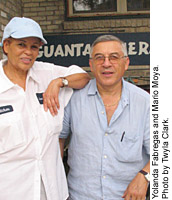 Imagine
Imagine
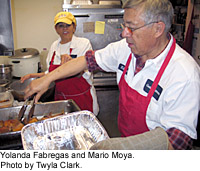
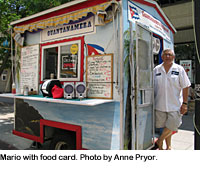 ready to take to Library Mall at
State Street. He would bring the prepared food to the cart and use special heating pans and warming ovens to keep it
fresh and hot for customers. Yolanda stayed at the restaurant to serve the customers who
went there.
ready to take to Library Mall at
State Street. He would bring the prepared food to the cart and use special heating pans and warming ovens to keep it
fresh and hot for customers. Yolanda stayed at the restaurant to serve the customers who
went there. 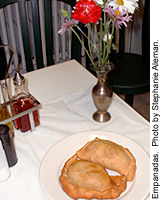 Traditional
Cuban
cooks flavor their rice with cumin, garlic and peppers. They make many
different rice mixtures too. Some add more spices like bay leaf and oregano. Some add tropical fruits like
Traditional
Cuban
cooks flavor their rice with cumin, garlic and peppers. They make many
different rice mixtures too. Some add more spices like bay leaf and oregano. Some add tropical fruits like 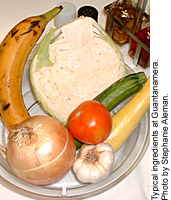 plantains, bananas,
plantains, bananas,